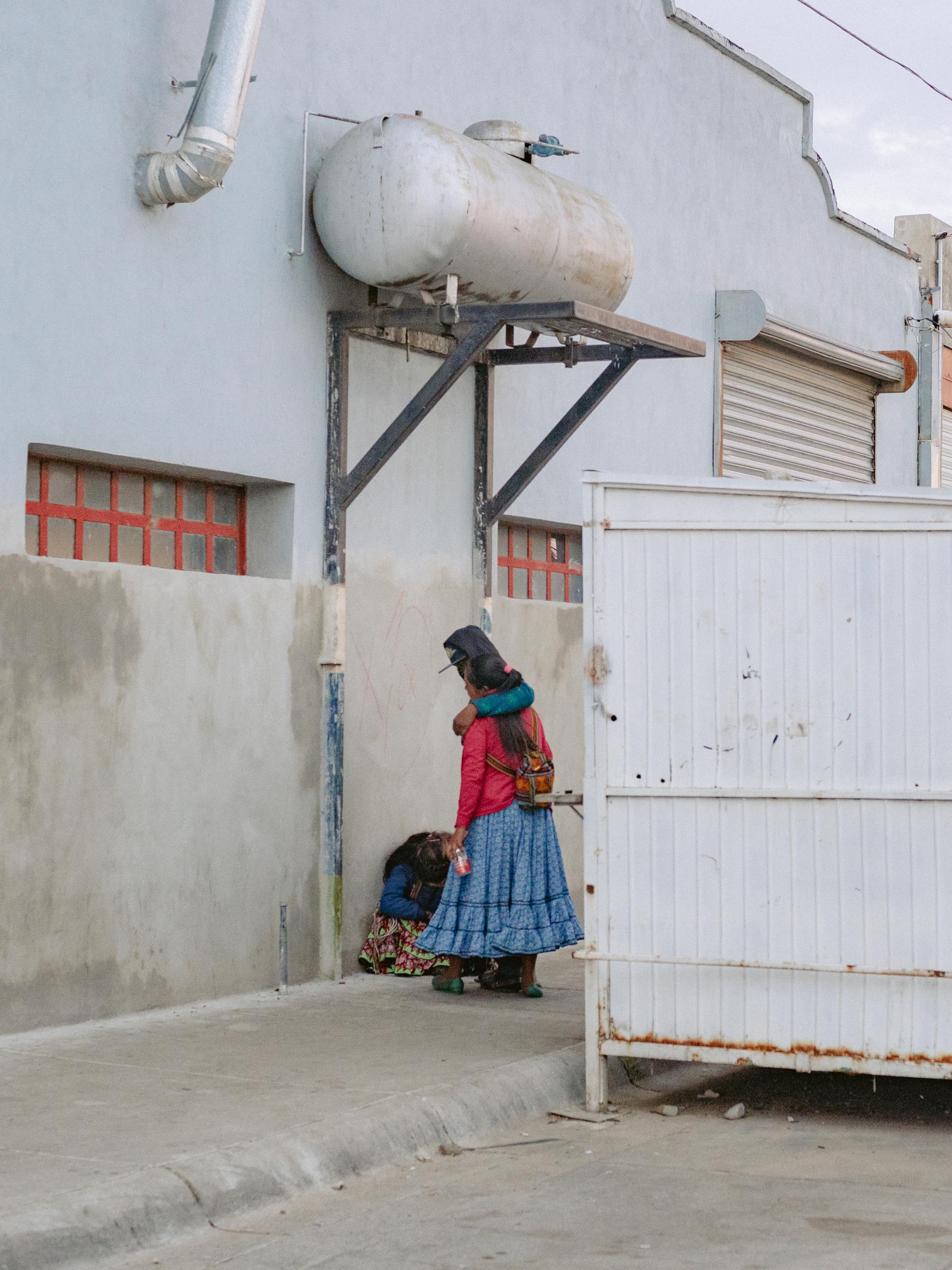
The Colorless Mennonite Villages
The taxi driver dropped us off on a single road surrounded by vast farmland. We told him the address was “Campo 6A”. “Campo” means “farm” in Spanish, so this should be the right location.
Cuauhtémoc, Chihuahua. If you go even further into the remote area, there is a settlement of people known as Mennonites. There are some houses scattered as you walk along the gravel road. But unlike the colorful image of Mexico, these buildings were all colorless. One might call them “stripped-down structures” or “primitive concrete architecture”. You can’t help but use contemporary words like “minimalist” to describe its simple appearance because we live modern, materialistic lives. The Mennonites are not seeking that kind of lifestyle. Here, you won’t find any advertisements or billboards, either.
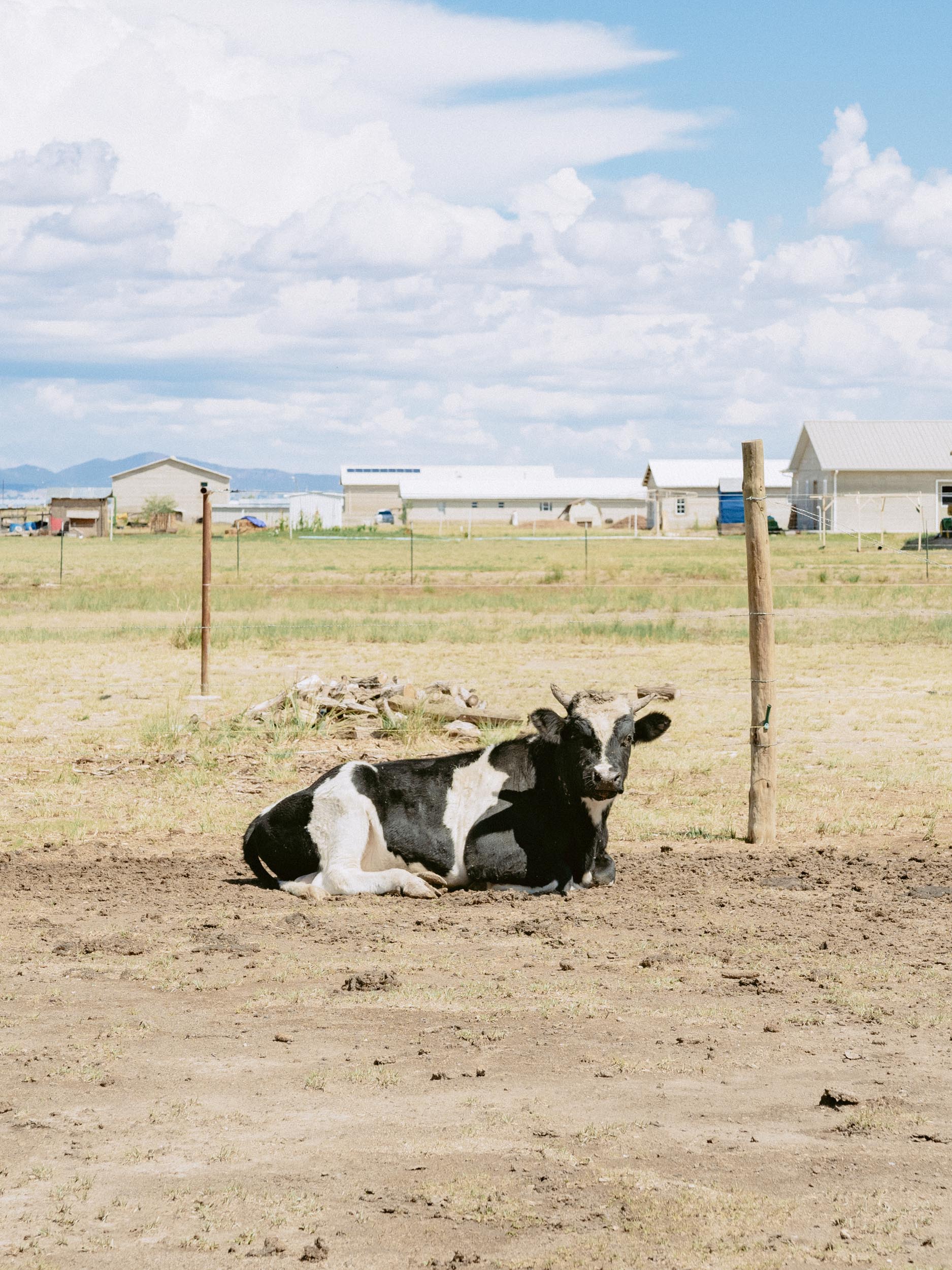
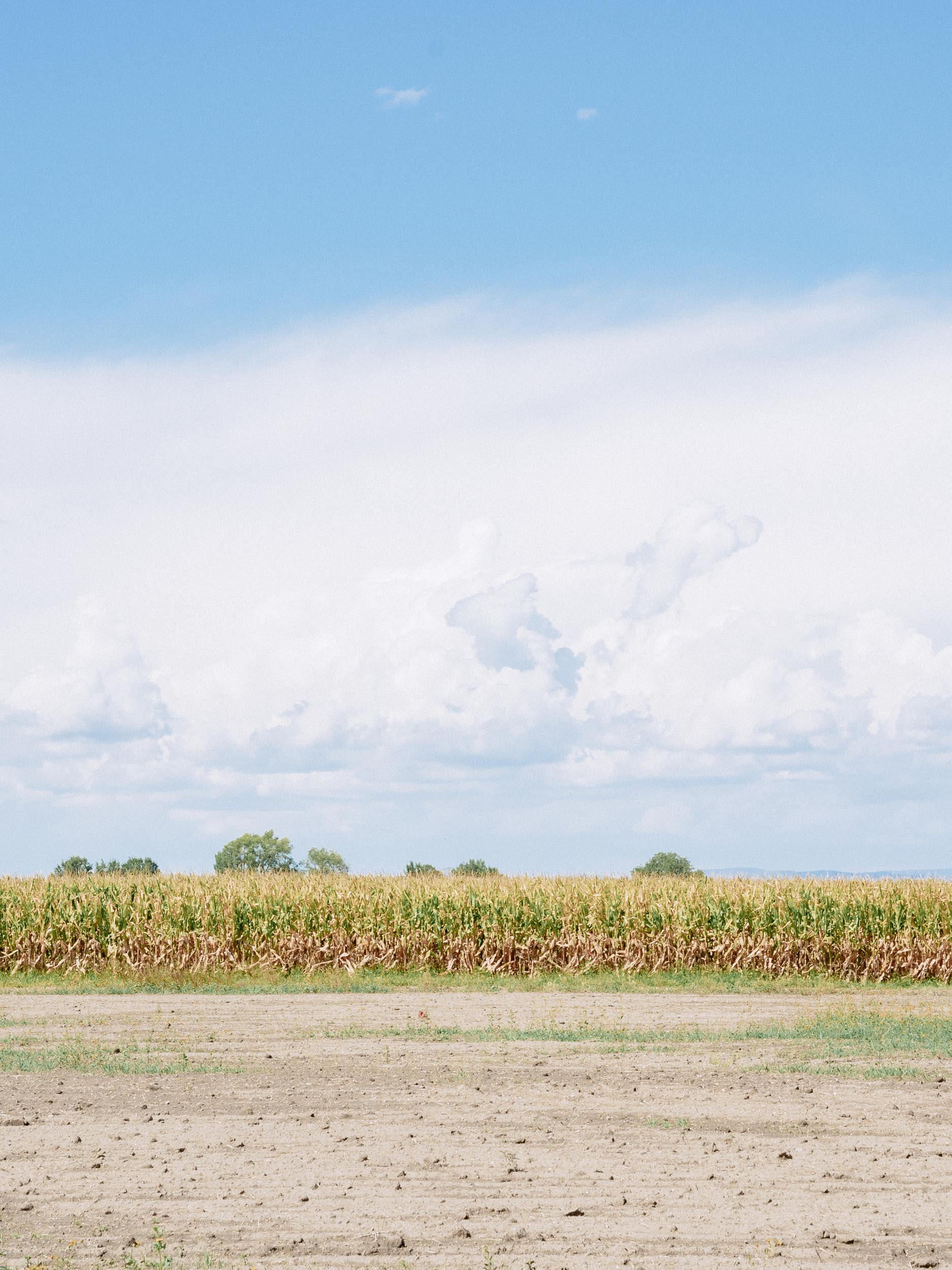
Mennonites are a Christian sect that emerged from the religious reforms of the 16th century in Central Europe. They live a simple, near-self-sufficient life in their community through agriculture and handicrafts. With highly conservative values, they abstain from alcohol and entertainment, choosing to settle in areas far from secular society. Some communities are so extreme in their conservatism that they reject modern civilization by opting for horse-drawn carriages over cars, abstaining from using electrical appliances, and continuing to live a life reminiscent of the 19th century. The Amish people in the U.S. live in a similar way.
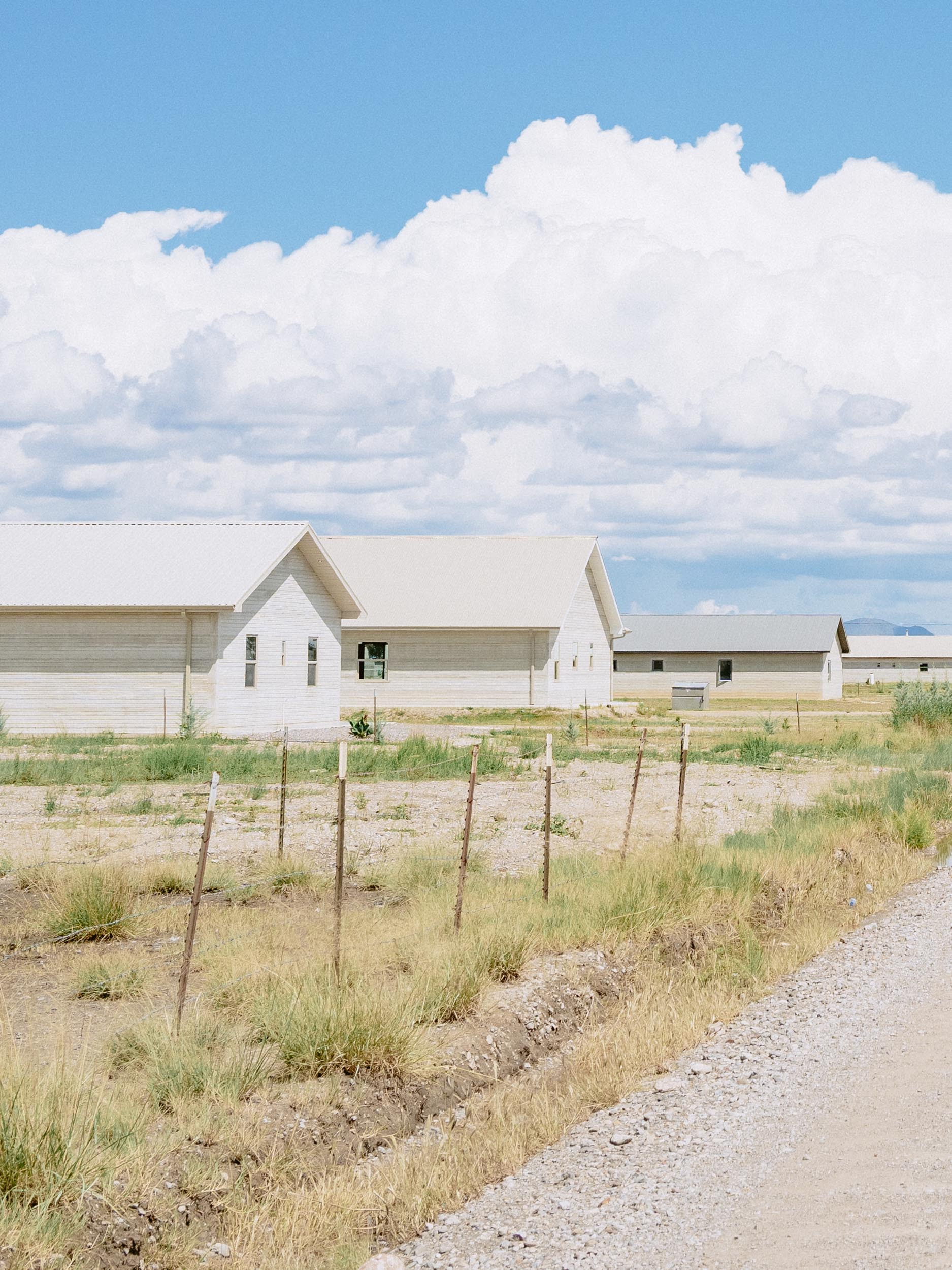
The history of the Mennonites is one of constant migration. The ones that settled in Chihuahua, Mexico were originally farmers in Russia whose lands were seized during the Bolshevik Revolution, causing them to flee to the U.S. and Canada. To protect their faith and ideal lifestyle, they eventually migrated south to Mexico as the U.S. and Canada began to modernize. Although they settled in Cuauhtémoc in large numbers in the 1920s, modernization in Mexico prompted some groups to settle even further south.
The South American immigrants I met in Mexico were bound North in search of freedom, money, and a better life. It’s surprising to think that, despite the different eras and beliefs, people took the opposite route for the same reasons only a century ago.
With that being said, my knowledge about the Mennonites is limited. I wondered what their lifestyle was actually like. In the city center, there is a Mennonite museum meant for tourists, complete with guides who recreate the past ways of life. That didn’t interest me much (not to mention that it was closed), so I visited the settlements instead.
A Building That Seemed To Prove Mennonite Roots
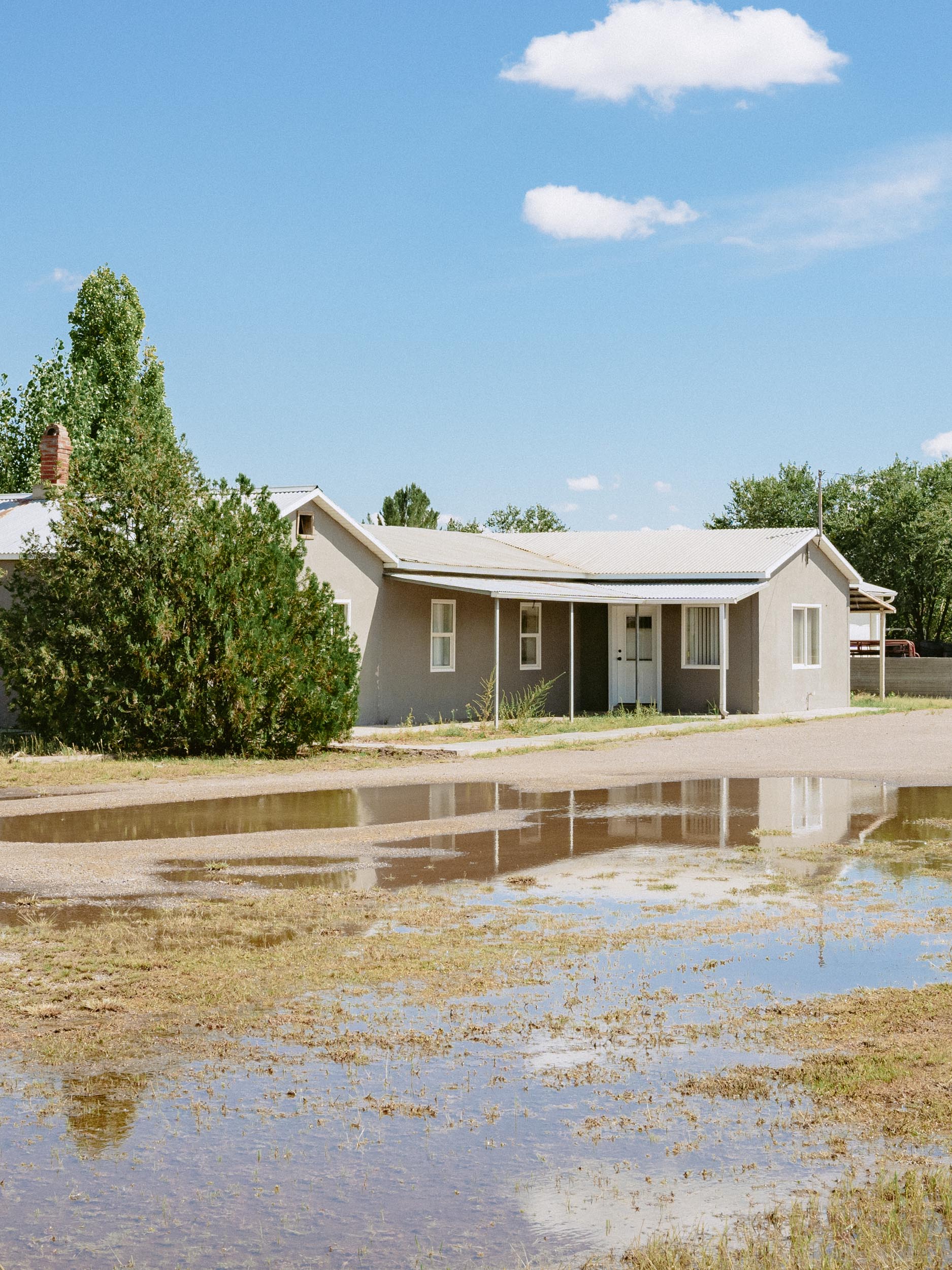
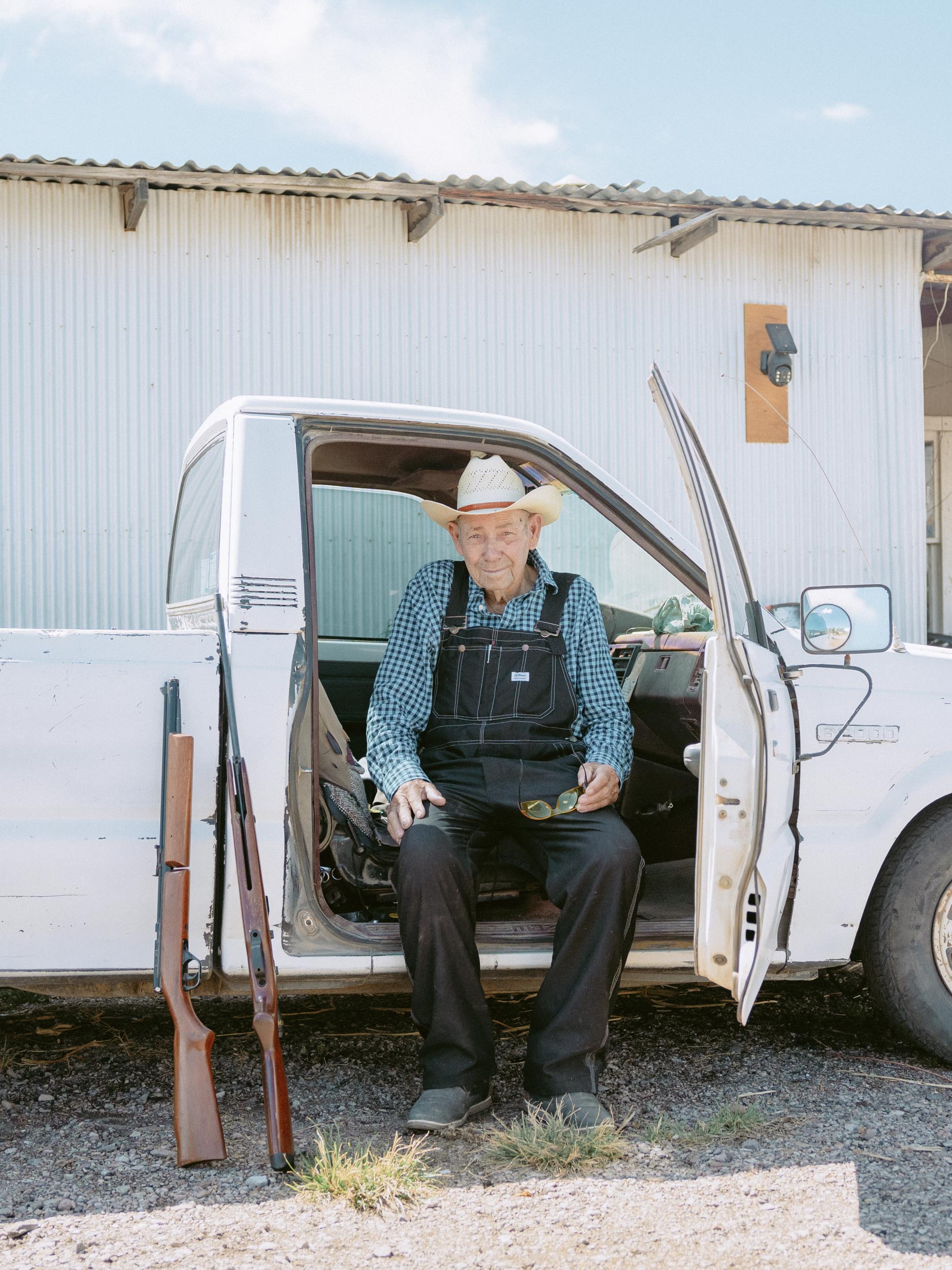
As I was walking through the settlements, there was an elderly white man who seemed to be wearing traditional Mennonite workwear. He glared at us while clutching a hunting rifle. Perhaps he’s wary of us outsiders. I attempted to speak to him in the broken Spanish I had picked up, but he remained silent. He started to load his gun with what looked like bullets. Tension filled the air. Growing anxious, I changed my pronunciation and greeted him again. The man, puzzled, interrupted me.
“Could you speak in English? I don’t understand Spanish”. His fluent English relieved me so much that I almost collapsed. He introduced himself as Peter, a 78-year-old from Canada who came here seeking the communal life of the Mennonites. Unfortunately, he seemed to be hard of hearing, which made it difficult to communicate. He had been shooting birds that flew into the garden. “You wanna try?” he said, as he handed me what was nothing more than an airgun.
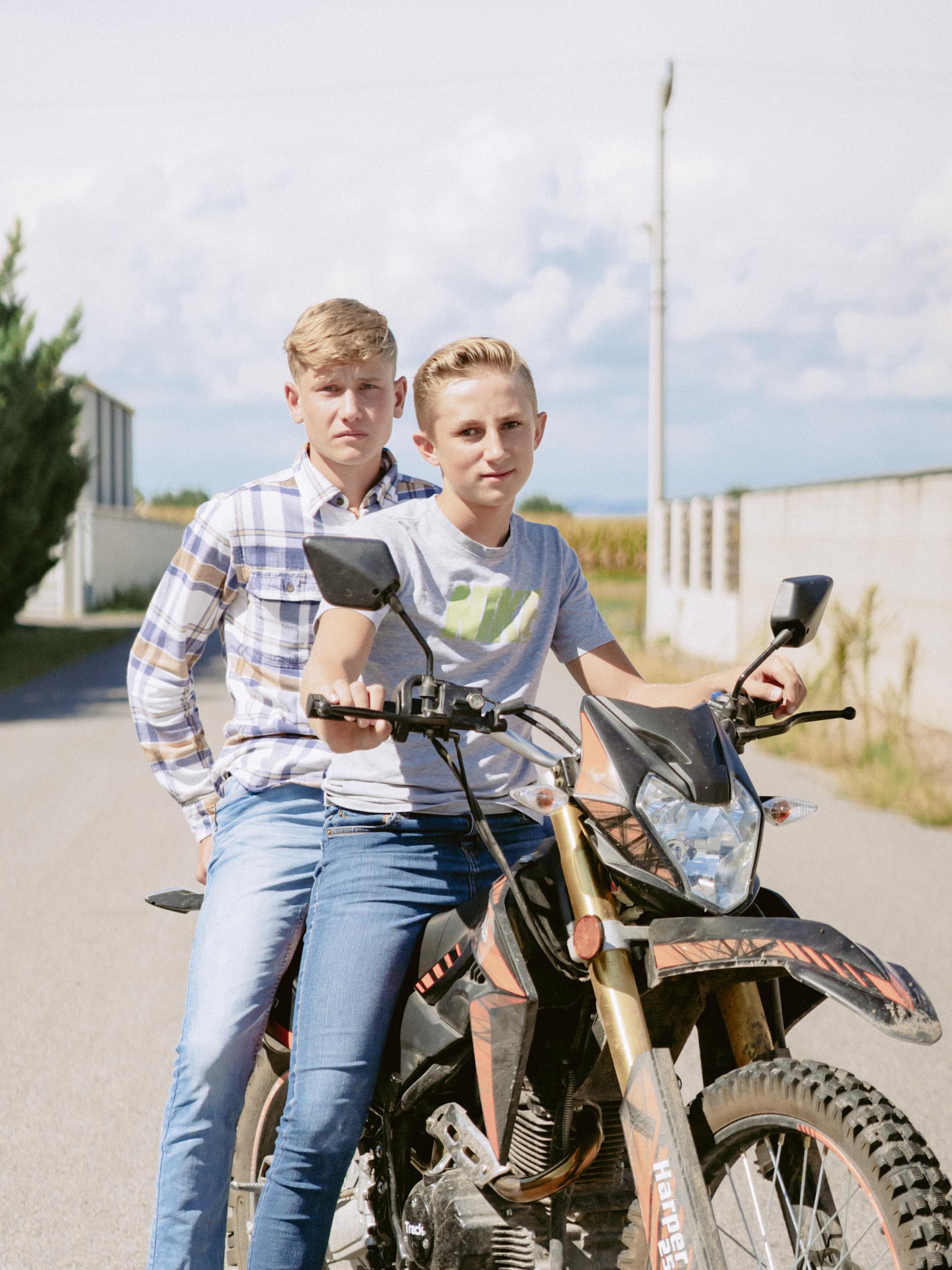

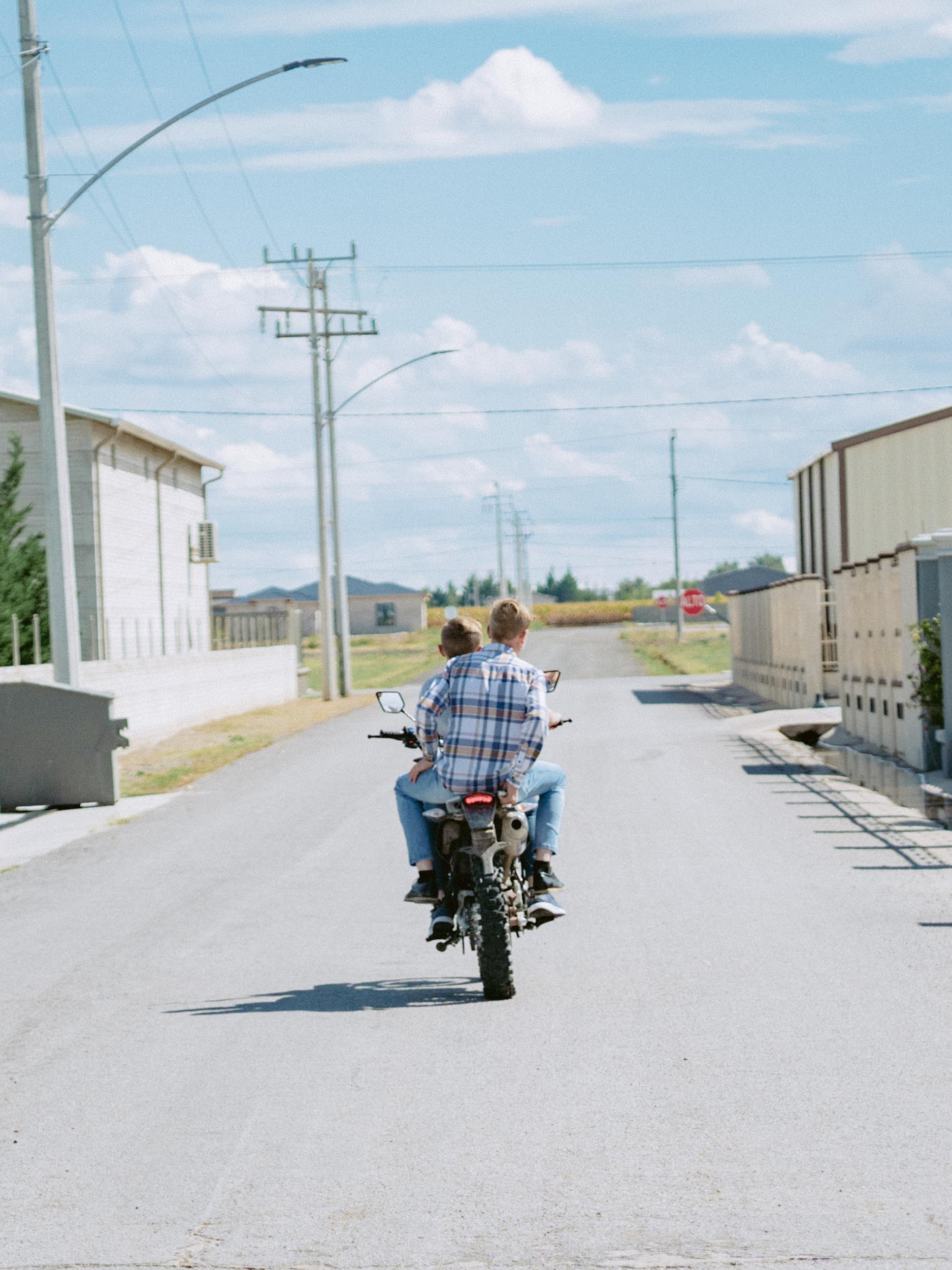
A little while later, two boys arrived on motorcycles: Joshua, 15, and Tobias, 14. The school that they go to is also run by Mennonites. When I asked them about classes, they told me that they learn Spanish, German, High German, and English in school. They referred to their native, Lowland German, as “Germany”, and general standard German, as “High Germany”. Perspectives shift depending on where you’re looking from.
There was a gas station along the road, and a brand new four-wheeled buggy carrying a group of five youngsters caught our eye. They mentioned their grandparents also migrated from Russia via Canada. “They used to ride horses back then. Now, we have smartphones and live just like they do in the city”, they told us. We exchanged Instagram accounts with them, the most modern interaction we could’ve had.
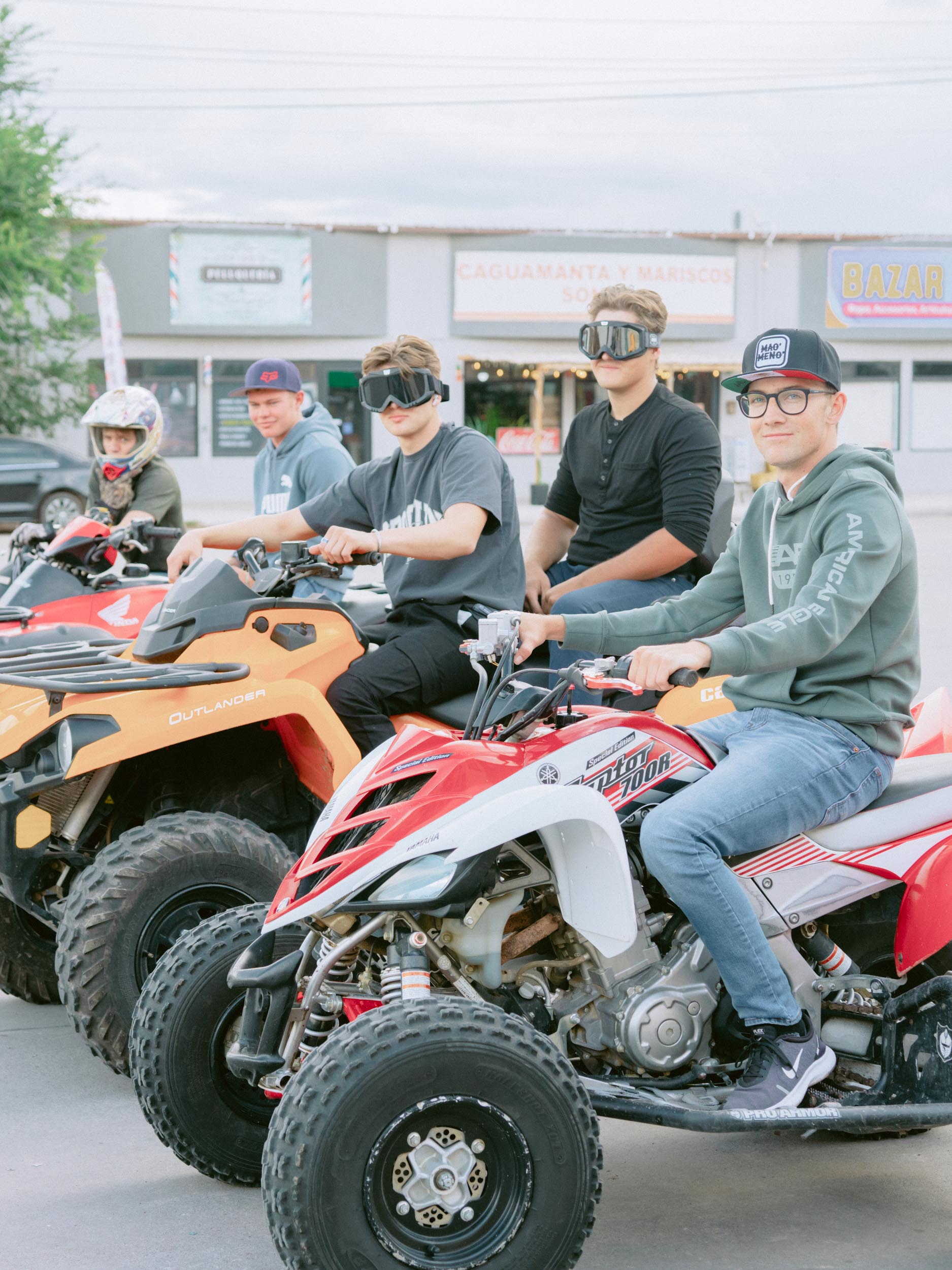
I also noticed some families hosting elegant house parties in their yards. Their lives didn’t seem all that bad. Upon further research, it turns out that many families in the area have been successful in agriculture. In fact, the entire town has experienced significant economic growth thanks to the introduction of the dairy farming industry by the Mennonites.
It’s difficult to imagine the believers who first settled here in search of farmland away from the rest of the world. Nevertheless, I still managed to find a building that seemed to serve as evidence of their roots: a telephone booth. It was a relic from a time when Mennonites couldn’t make phone calls from their homes. Canadian and American flags were drawn proudly on the walls of the interior, suggesting they likely made international calls from there. I’m sure they were maintaining their emotional ties by talking to relatives from back home.
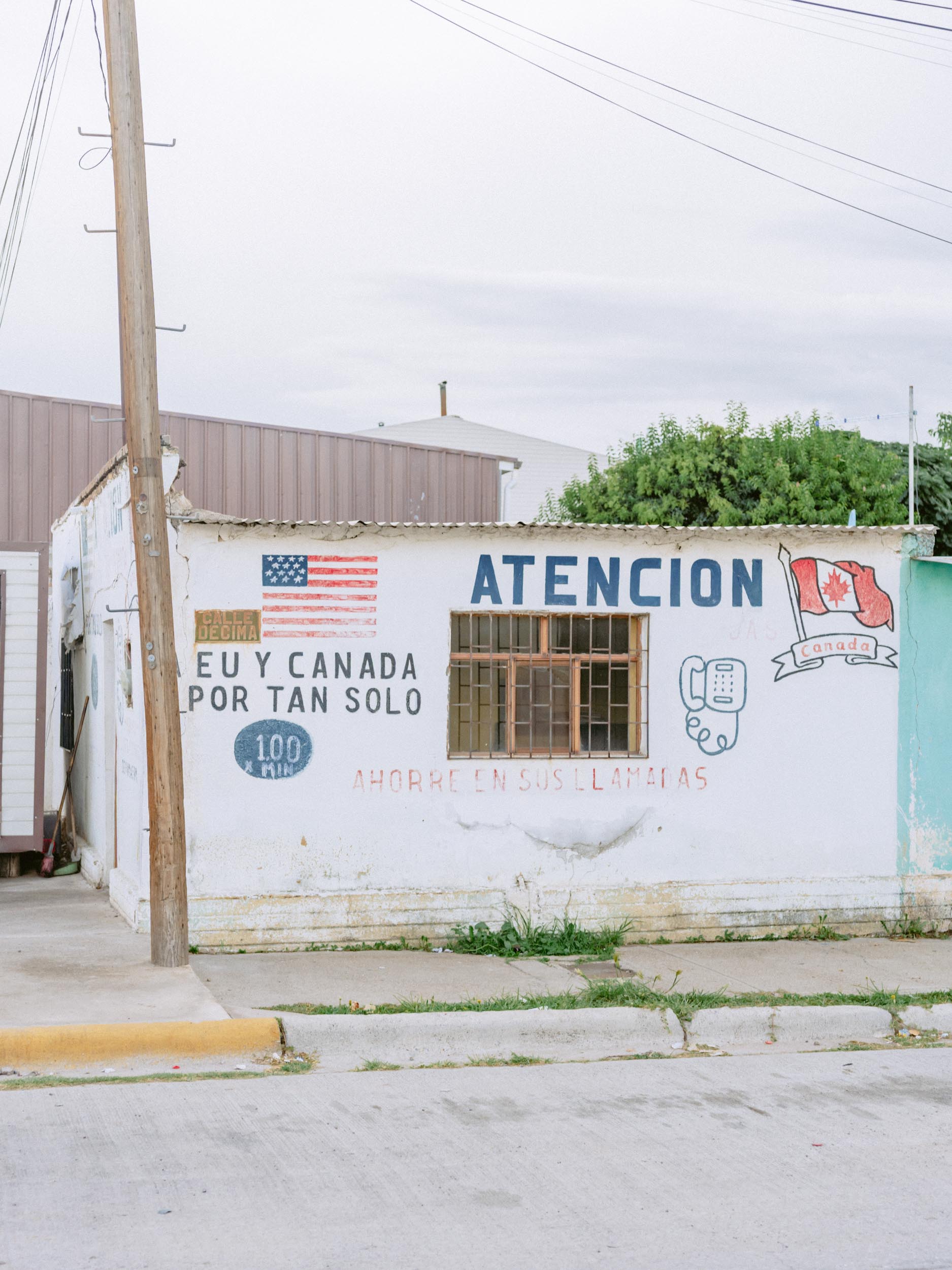
The Indigenous Tarahumara Women of the Mountain Region
As we took the bus to go further into the city, some people wearing vibrant clothing caught our eyes. They were indigenous women from the mountainous Tarahumara tribe. In contrast to the Mennonites, they wore bright primary-colored clothing and soft blouses and skirts that almost resembled pajamas.
I’ve tried striking up conversations with the Tarahumara women before, mostly to no avail. The Tarahumara people escaped from the Spanish conquistadors and found refuge by hiding in mountainous caves to preserve their traditional lifestyle. Those who have been coming into the city more recently may seem overly cautious to this day because of that history.
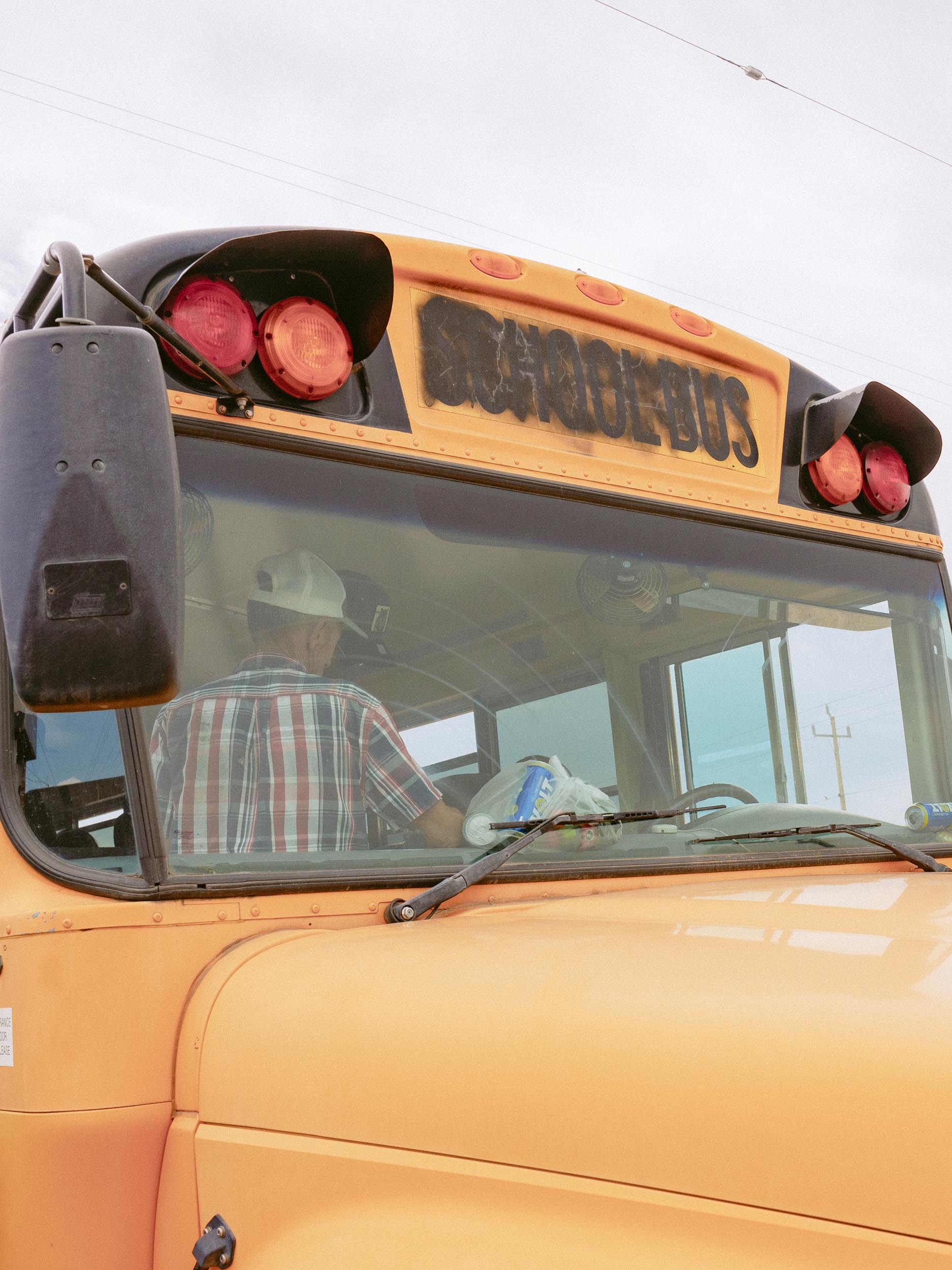
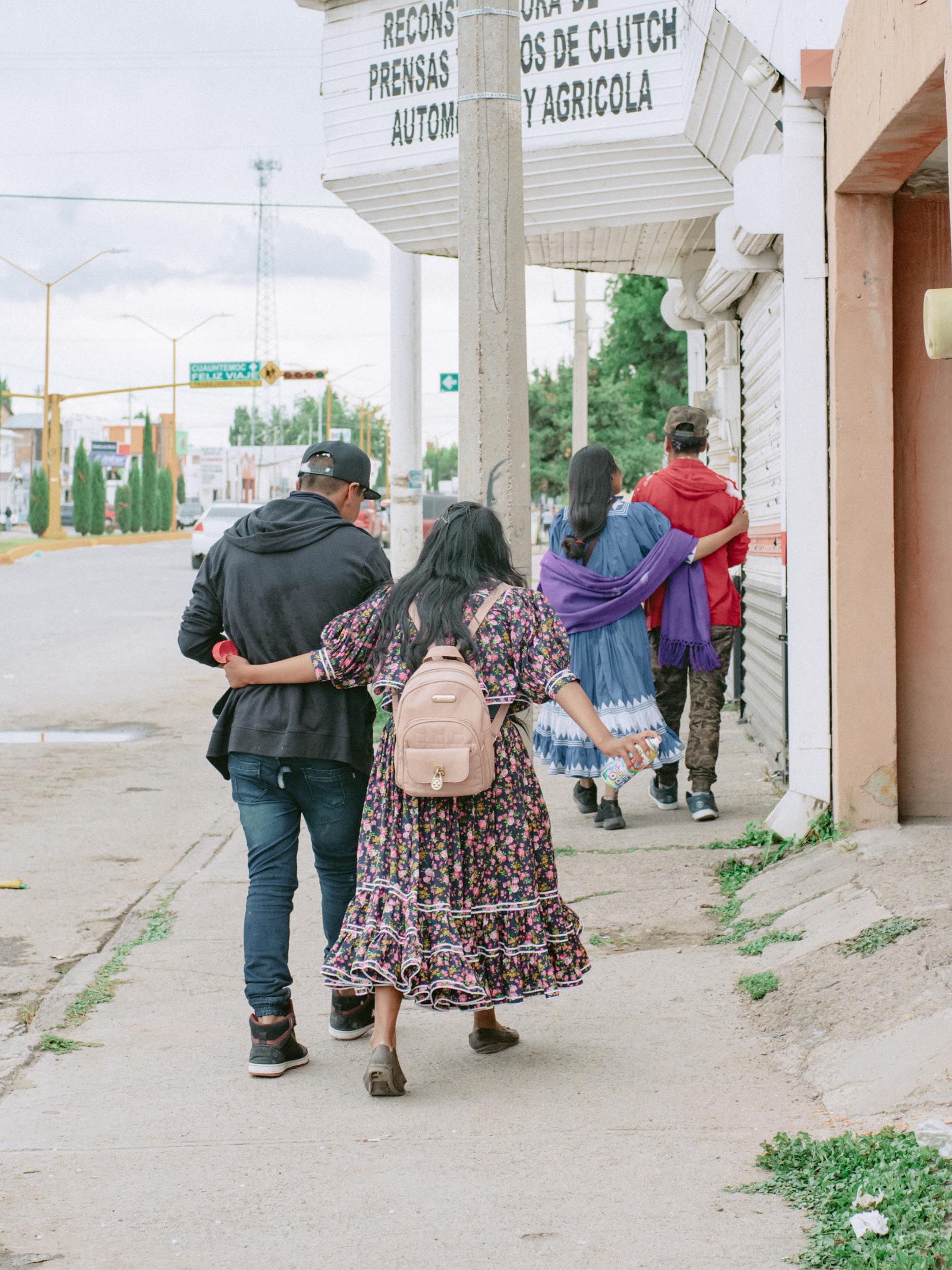
We saw a Tarahumara family attempting to get on a truck on the outskirts of town. Eventually, I greeted an elderly woman with a headscarf because her outfit intrigued me. When the woman’s daughter questioned why I wanted to take a picture of her mother, I sincerely replied, “because her outfit is beautiful”. Upon conveying this to her mother, she replied with something resembling, “it is what it is”, gave a nonchalant look, hopped out of the car, and posed on the street.
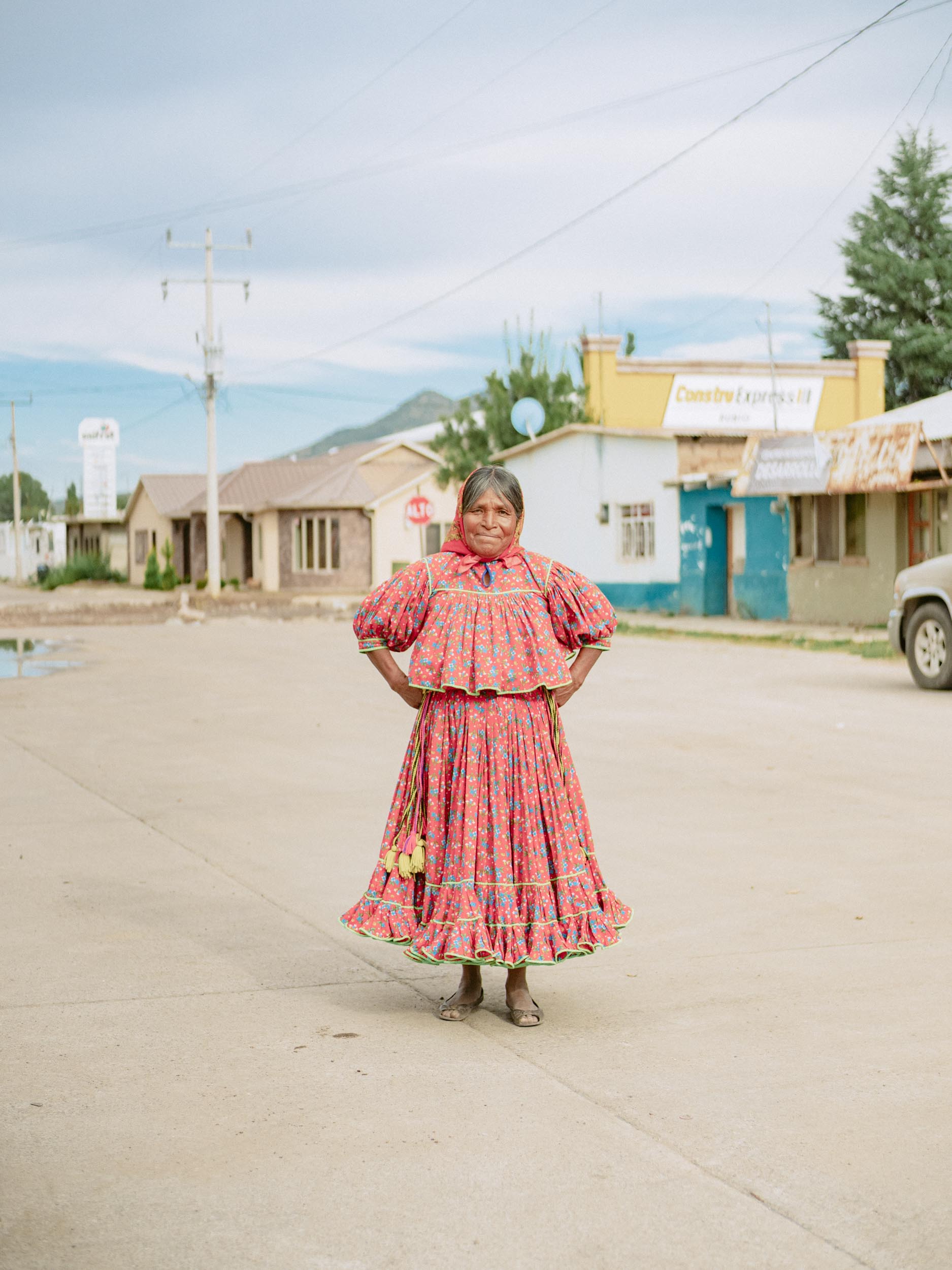
As the daughter watched her mother depart in the car, she took out her smartphone. “Send me the photo”, she said, as she showed me her WhatsApp screen.
Of course, expectations of “traditional lifestyle” always involve outsiders who selfishly create their own ideal narratives. Indigenous people deal with problems regarding land ownership while Mennonites deal with tensions with local residents. Sometimes, people grapple with nature and different cultures. And other times, people maintain a delicate harmony through being mobile, or so we pondered, while moving on to the next town the following day.
